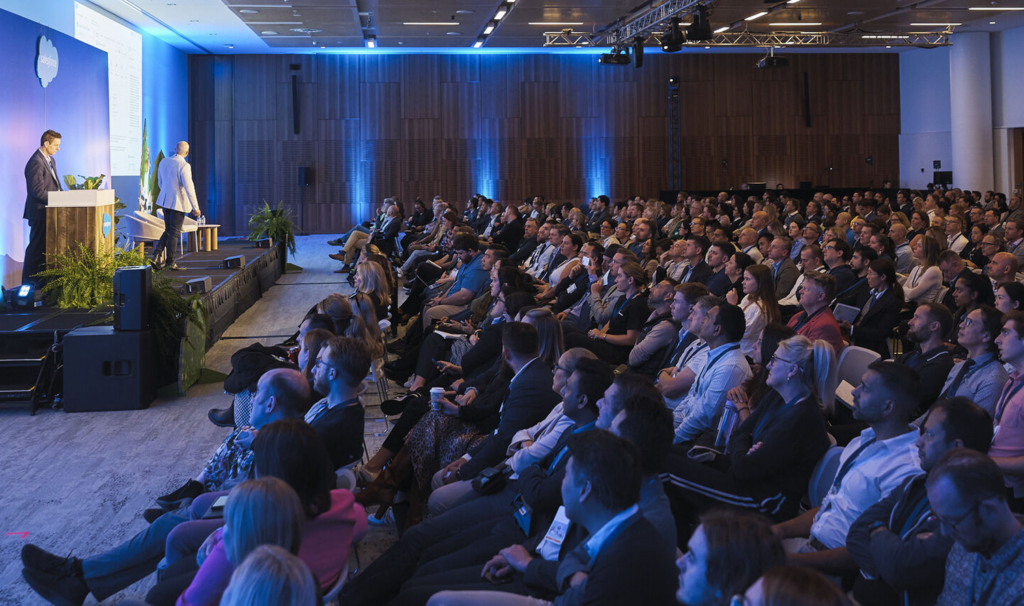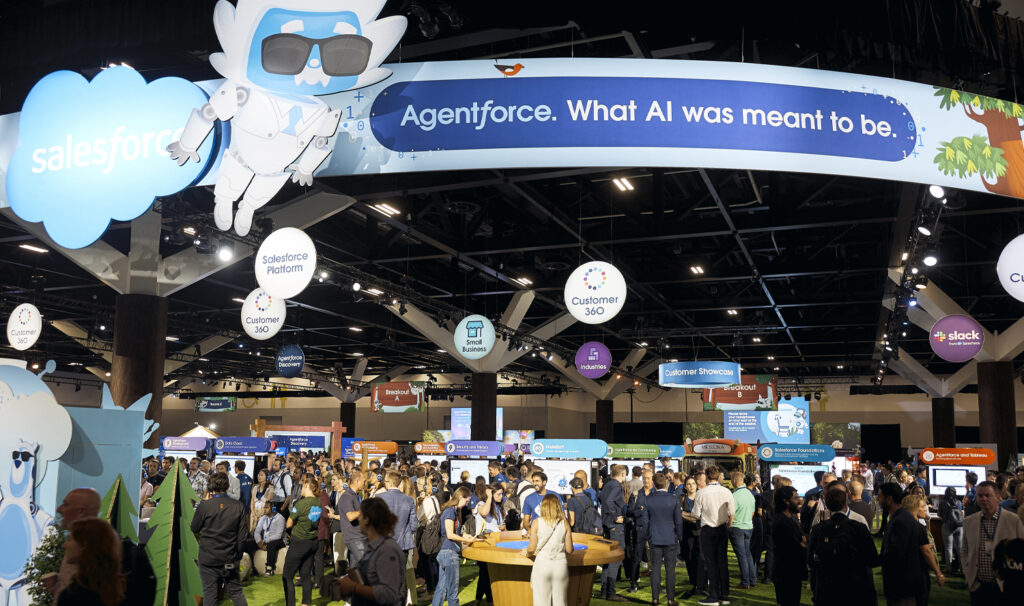Last week at our Revenue Cloud Round Table, I had the pleasure of discussing the future of technology, customer experience and RevOps models with Thinque Founder and Futurist Anders Sörman-Nilsson, Salesforce GM and RVP Platform & Sales Cloud Clyde Fernandez and DocuSign Strategic Value Engineer Lindsay MacDonald. Here are the highlights — Reid Meldrum
How Revenue Operations unlocks growth
To inspire fresh business ideas, uncover digital innovators and widen the scope of possible solutions, we heard from Anders Sörman-Nilsson who shared insights from his book Digilogue: How to win the digital minds and analogue hearts of tomorrow’s customers.
“Moving to digital is not necessarily about throwing analogue channels out with the digital bath water,” Anders argued. “It is about expanding into both these two worlds.”
Every business today is navigating between the analogue and digital worlds. The key focus now is how to create frictionless customer journeys.
Research from McKinsey shows that organisations that innovate through economic slowdown outperform their peers by 10 per cent. Even more impressively, they outperform their peers by 30 per cent during the economic recovery phase.
“Disruption is a signal from the future that it is time to change,“ says Anders. To meet disruption takes a willingness to change, knowing that we don’t like change. “Whether we like it or not, change is always going to happen without our permission.”
Removing friction: Digital is the new human touch
During the pandemic, the human touch was superseded by the ‘contactless’. Even the cash in our wallets is existing on borrowed time, so any friction in the digital interaction must be removed as a priority. Anders shared an experiment in which banks tested two coffee shop scenarios – one with a minimum cashless transaction of $10 and the other with no minimum. Sales at the coffee shop with no minimum transaction were 11 per cent higher.
So many businesses still create friction, and technology leaders must design the friction away. This is not only for the good of a coffee shop’s bottom line either – we can increasingly code for more humane outcomes as well. The World Economic Forum says that over the next 10 years AI can be used to save lives as a result of less human error, though society must adopt and deploy those robotic technologies responsibly to avoid decision-making that would cost lives.
Speeding up customer service
“Sometimes we think that the analogue human touch, smiling human interface, is the best form of customer service,” Anders said. “Now clearly it is not.”
Anders explored large insurance and superannuation companies, which are heavily dependent on customer service.
“Customer service is their trade. Yet they have long wait times and customers are often left for weeks or months hanging in administrative loops. This shouldn’t be so difficult,” he said, drawing a contrast to digital insurance solutions that ask customers to speak their insurance claim into a smart device. Through biometric authentication, Anders said, 20 different AI algorithms fraud test and authenticate identity.
“We now realise that most human touch is of course a digital touch. Insure-tech now set a world record between claim and payment – three seconds!”
Building trust with the conscious consumer
Anders referred to Rachel Botsman’s definition of trust – “a confident relationship to the unknown” – as a bedrock for his advice around building trust.
I define trust quite simply as a 'confident relationship to the unknown.' Here is the graphic I use to explain the process of how it works and why its the foundation of every action, relationship and transaction. pic.twitter.com/ipCkOaZoGe
— Rachel Botsman (@rachelbotsman) February 4, 2018
“Whether you are selling new technologies, an autonomous car or digital currency, we have to tell a better story, provide digital nutrition, so that we build trust,” Anders said, emphasising the importance of doing so with the ‘new’ consumer, who is increasingly making decisions based on the environment, data, science, future, health and more. “Conscious consumers care about where products come from. That means the entire supply chain is now a ‘hearts and minds’ story.”
Merging digital and analogue with a wow factor
Clyde Fernandez illustrated how businesses are bringing the digital and analogue world together to unlock new revenue models.
Everything starts with understanding the world of our customers, Clyde said.
“As we merge digital and analogue, we’ve got to find a way to wow our customer. That’s our customers, it’s our colleagues and communities at large – consumers of our services and the broader ecosystem. The way we do that is by taking out the friction,” explained Clyde.
With attention a scarce commodity, every interaction matters, Clyde said, which makes attracting attention and using it to make an impact essential.
“We know that our customers are coming in from many different channels, and our job is to make sure their experience is seamless, even with a wow factor,” he said. “We do that by taking friction out of every interaction, on every touch point and every channel.”
Laser focus on reducing friction
Sometimes the most simple tasks cause the most friction in an organisation. Take for example the approval and signing of documents, which Lindsay MacDonald told us can take months and involve as many as 10 people.
“That sounds like lots of friction with plenty of opportunity for things to go wrong,” Lindsay said, comparing that experience to what the DocuSign team has seen among its customers. “We have seen 82 per cent of agreements being signed in 24 hours. Digitising this one process has significant efficiencies across the entire business.”
These flow-on benefits across the business speed up deal times, reduce administrative burden and offer cohesive approvals.
Bringing together art and science engages warp drive in revenue operations
Right now, with the exponential rise in the complexity of sales and revenue channels, business success relies on the astute alignment of resources, people, processes and technologies. We call this Revenue Operations (RevOps), and a RevOps strategy brings together the art and science.
A recent study conducted by Forrester Consulting, on behalf of Salesforce, found that ANZ organisations that have implemented RevOps strategies have increased their revenue growth rate by 53 per cent, on average.
At Simplus our goal is to unpack complexity and put it back together in a logical sequence. This helps our clients to make decisions and simplify their customer journey.
- Single view of revenue operations: To find the sharpest view of revenue operations, we look at a single product or service from three different perspectives: how is the product or service being booked? How is it delivered? How are you capturing finances?
- A catalogue approach to RevOps: One of the clearest ways to view your revenue is by using a catalogue approach to operations. Our team breaks down internal silos for a seamless customer experience and financial growth.
- As few systems as possible: The more systems you have the more mismatched your data – all areas of the business must work together to provide visibility.
The future demands us to think smarter
From these discussions with industry experts, the themes are loud and clear:
- Businesses that have the future in clear focus and the willingness to change will flourish.
- Those that are close to the customer can adapt to their changing demands and remove friction from the most important future-facing interaction points.
- Businesses that simplify their systems create greater efficiencies and gain clear data insights.
One phrase Anders said has stuck with me: “Transformation now sits at the core of all successful brands into the future”. This has never been more true – and it will never again be less true. That’s why we believe in the art and science of digital transformation at Simplus.
Would you like to speed up your complex quoting and billing processes? Our CPQ and billing advisory team makes the complex simple. Get in touch for an advisory session.






